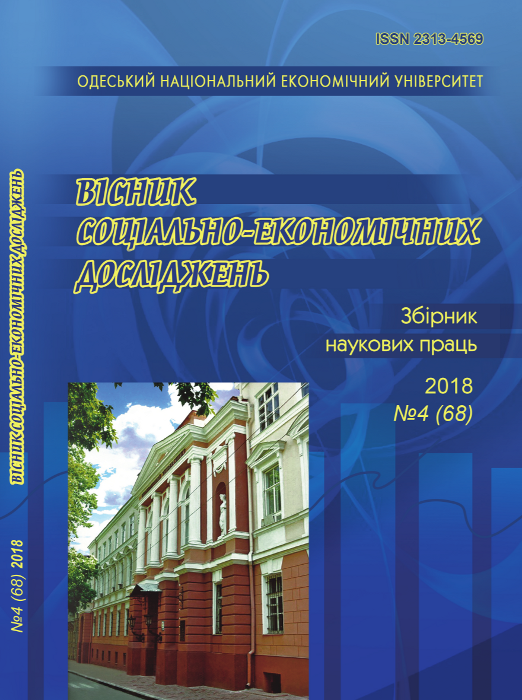Identity of a tourism destination and the need of linking it to the principles of sustainable tourism development
DOI:
https://doi.org/10.33987/vsed.4(68).2018.212-219Keywords:
tourism destination identity, principles of sustainable tourism development, Lindstrom’s marketing modelAbstract
The article considers the modern conditions influence of world development, which are characterized by a high degree of uncertainty and rapid technological progress on the tourism activity dynamics and the need to find a new business models for competitiveness ensuring and sustainable development in the tourism sector. The concepts of “tourist identity of location”, “tourist attractiveness of territory” are clarified and expanded. The main factors affecting the correlation between the tourist identity of the destination and tourism sustainable development, in accordance with the M. Lindstrom “Manifesto of the Seven Pillars”, who fully discloses the marketing approach to formation and diversification of tourist product, are considered and analyzed. It is determined that the main factor for the formation and maintenance of the tourist identity of each direction is the physical environment ‒ nature, infrastructure and superstructure, with their respective specific characteristics, as well as history and culture, lifestyle, traditions and beliefs, creative and innovative views of population. The study is based on the idea that the individuality of each tourist destination is a prerequisite for observing the principles of sustainable development and neutralizing the negative consequences arising through the application of marketing approaches to ensure better interaction between the demand and supply of tourism services. Based on the study, it was concluded that the limited capacity of tourism resources, on the one hand, and the growing need of the world’s population for active participation in tourist trips, on the other hand, require actions by parties interested in the tourism business at different levels for resources conserve providing of quality services.
References
UNWTO Tourism Highlights: 2018 Edition, available at: https://www.e-unwto.org/doi/book/10.18111/9789284419876.
WTTC Travel and Tourism Global Economic Impact, Issues 2017, available at: https://destinationsinternational.org/industry-reports/travel-tourism-global-economic-impact-issues.
Commentary on tourism concerns in Tulum on the Yucatan Peninsula in Mexico on America’s Today TV show on BNT2.
Ryan, Chr. (1995). Recreation Tourism, Open Society, Sofia, pp. 176–177.
Weiner, Е. (2016). The Geography of Genius. A Search for the World’s Most Creative Places from Ancient Athens to Silicon Valley, Faber Publishers, 369 p.
Botti, L., Peypoch, N. (2012). De la Touristicite des Territoires, Revue “Tourisme et Territoires”.
Rakadzhiyska, Sv. (2014). Trends in the Development of Tourism Destinations, Infrastructure and Communications, Scientific Journal, UNWE, issue 4, Sofia, pp. 36–41.
Marinov, St. (2014). Trends in the Development of Seaside Recreational Tourism, Infrastructure and Communications, Scientific Journal, UNWE, issue 4, Sofia, pp. 132–135.
Responsible Travel, available at: www.eturbonews.com/59292/unusual-holidays-guide-launched.
Rakadzhiyska, Sv. (1997). Sustainable Tourism, Concept and Opportunities for Development, Izvestia, UE, Vol. 2, p. 22.
European Union law portal, available at: http://eur-lex.europe.eu/lex.
Market Intelligence and Competitiveness, available at: www.mkt.unwto.org/content/collaboration-european-union.
Kotler, Ph. et. al. (2010). Marketing, 3.0, LOCUS Publishers, p. 54.
Grancharova, B. (2003). Market Segmentation and the Economic Benefits for Companies Offering Tourism Services, Slavena Publishing House, p. 137.
Lindstrom, M. (2017). Small Data: The Tiny Clues That Uncover Huge Trends, East-West Publishing House, p. 272.
Downloads
Published
Issue
Section
License
Copyright (c) 2019 Socio-Economic Research Bulletin

This work is licensed under a Creative Commons Attribution 4.0 International License.






